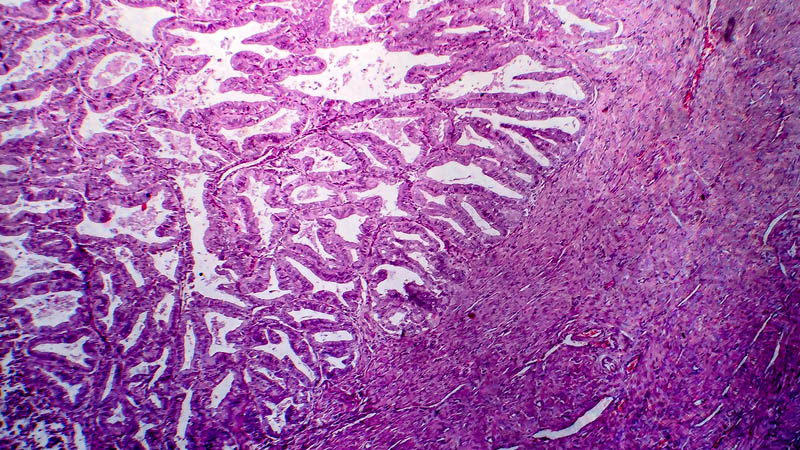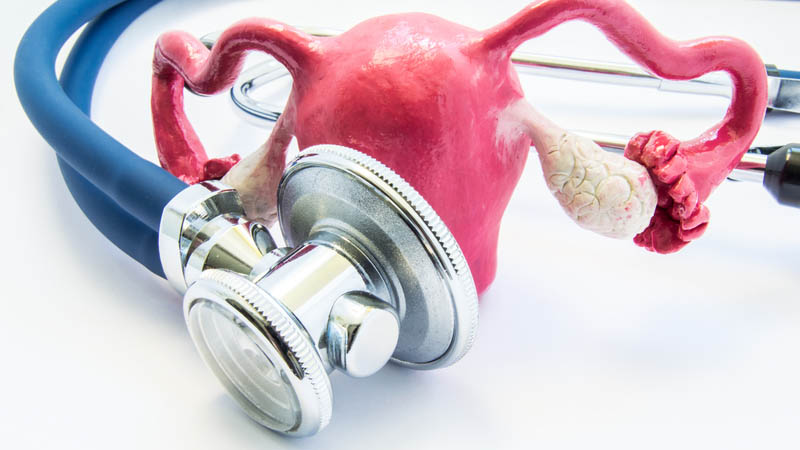Determination of diagnostic value of selected immunohistochemical tests in patients with uterine corpus sarcoma and their therapeutic and prognostic usefulness
Joanna Jońska-Gmyrek1, Anna Nasierowska-Guttmejer2, Mariusz Bidziński1, Anna Dańska-Bidzińska1
 Affiliacja i adres do korespondencji
Affiliacja i adres do korespondencjiUterine sarcomas represent a rare and heterogenous group of tumours, sometimes demonstrating multidirectional differentiation. Histological type of the sarcoma influences the choice of therapeutic modality. Aim of paper: Determination of diagnostic value of selected immunohistochemical studies (MIB1, caldesmon, desmin, SMA, SrMa, CKAE1/3) in the definition of histological type of tumour. Assessment of expression of the protein c-kit (CD117) MIB1 and inhibin and their prognostic role. Material and method: Study material consisted of a group of patients with uterine sarcoma, treated at the Center of Oncology in Warsaw, Poland, since 1999 thru 2006, from whom surgical specimens and paraffin blocks were obtained. Of 120 eligible patients, complete clinical data and specimens suitable for foreseen studies were available in 66 cases and this group became the subject of further analyses. Immunohistochemical (IHC) tests were performed using a panel of antibodies (SMA, SrMa, desmin, h-caldesmon, CD10, CKAE, MIB1, inhibin and CD117). Diagnostic value of IHC studies was assessed by descriptive statistical tests. Original histopathological findings were confronted with the results of validated IHC tests. Survival was assessed based on Kaplan-Meier curves and follow-up time – by an inverse Kaplan-Meier curve. Prognostic factors were analysed by the Cox method. Threshold of statistical significance has been set at p=0.05. Results: Original microscopic findings have had to be modified as to histological type of sarcoma in about 1/3 of the cases. Histological diagnosis was an independent prognostic factor, influencing both overall survival rate and time to tumour recurrence. Prognostic factors influencing recurrence-free survival were: invasion of perivascular lymph space (lymph space invasion – LSI), proliferative index (MB1) and severity of tumour cell necrosis. Conclusions: Application of a panel of suitable IHC tests contributes to a more precise determination of tumour type, assisting in an optimal choice of adjuvant treatment modality and thus in improvement of the patients' prognosis.









